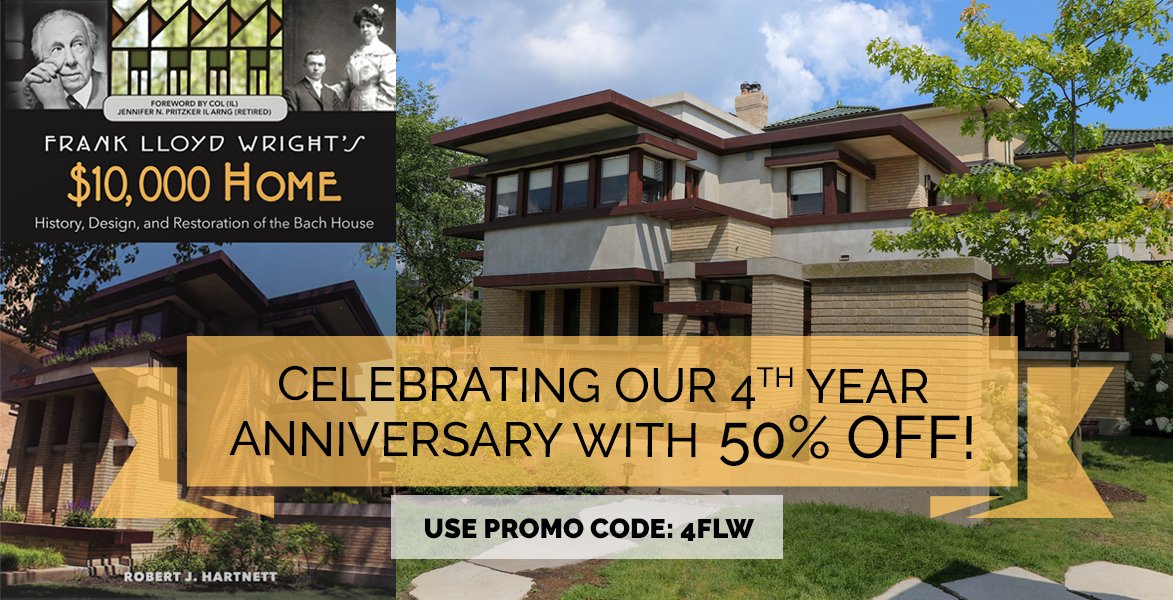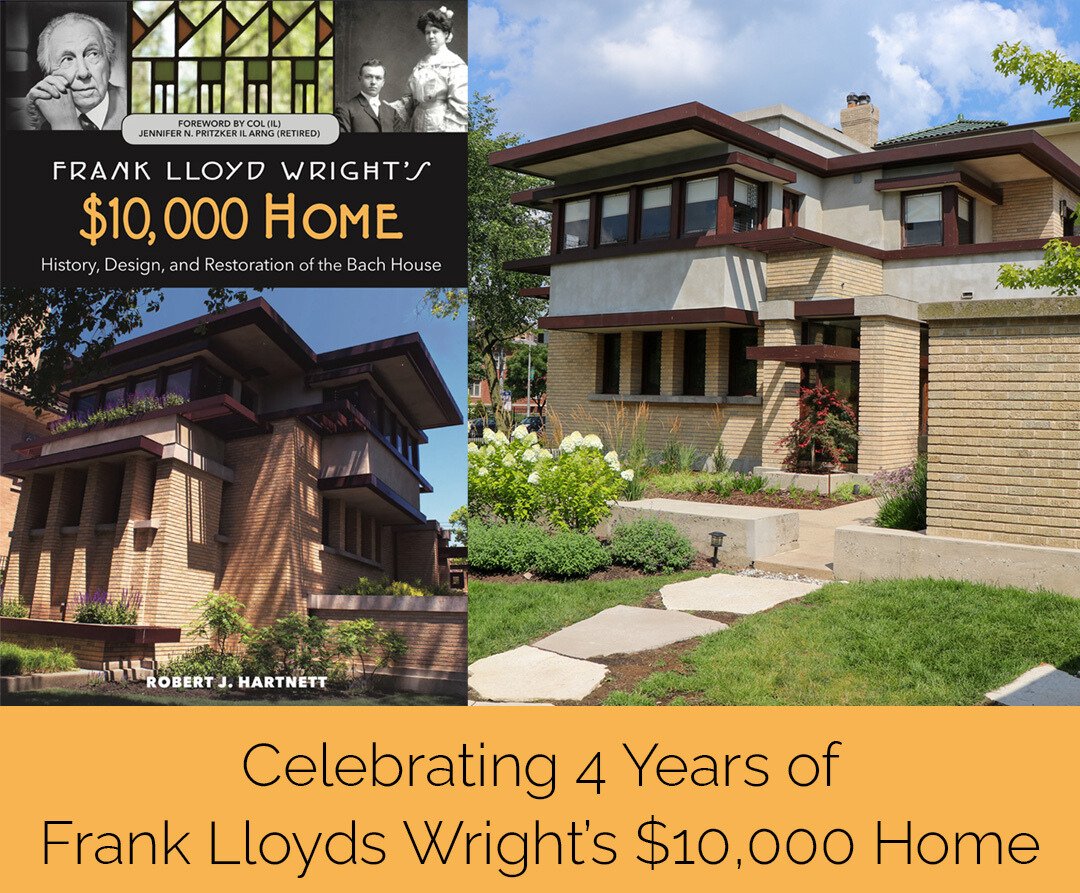On the fourth anniversary of his book release, Master Wings Publishing spoke with author Bob Hartnett on what still excites him about the subject and project.
What’s something about Frank Lloyd Wright that people might not know?
One of the aspects I enjoyed most when writing the Bach House book was learning about how Wright was influenced by Japanese architecture. He was an avid collector of Japanese art prints, and his exposure to these prints led him to develop an appreciation for Japanese architecture.
So, you cover this in your book, Frank Lloyd Wright’s $10,000 Home?
Yes! The Bach house provides an excellent example of how Wright blends these features into a unified whole. Wright’s design expertly uses these elements in such a subtle way that if you are not acutely aware of them, you will have missed them altogether. My chapter on Japanese architectural elements that can be found in the Bach House takes the reader on a step-by-step voyage from the exterior of the home to the inner confines and explains each feature in easily understandable language. The book includes photographs of each of these features as well. If you have the occasion to visit the Bach house, you can use the book as a guide to discover ten characteristics of Japanese architecture Wright used in the home.
I tried to write this chapter so that once readers have learned about Wright’s use of Japanese architectural elements, they can visit other Wright properties and see how these features can be found in other buildings.
Are there other buildings you’re thinking of in particular?
Three buildings come to mind:
First is the Heurtley House, from 1902. Second, is the Robie House, from 1909. Both of these prairie houses Wright designed with open floor plans and living spaces which could be adapted for different uses. These are elements that are found in Japanese architecture.
The third building would be Unity Temple from 1905. The design of Unity Temple is similar to the temples Wright had visited in Japan earlier that year. The sanctuary is set at the front of the building, and a common room is located at the rear of the structure. These two spaces are connected by a central entry hall.
What’s another special or classic Wright feature you think could spark interest?
There are two I’d like to highlight here: The inglenook and the path of discovery.
The inglenook, also known as the hearth, became an essential space in Wright’s Prairie style homes. The inglenook in the Bach House is formed by the bookshelf and the dining room table. Here, as in other homes, this area is a focal point for viewing the home’s interior and a tranquil space for quiet reflection.
Wright’s path of discovery begins with the simple act of trying to locate the entrance of his buildings. At the Bach House, the main entrance is hidden from view until you are almost at the door. To reach the doorway, you must travel up several steps and take a series of turns. Wright uses this trick in many of his buildings. He needs us to seek out the entryway. He hopes we will spend this time admiring the outside of the building we are about to enter before we actually go in.
Do you have an inglenook or path of discovery at your own home?
My wife and I live in a small 1950s ranch house. It has a very traditional layout. Originally, our house had five rooms, a kitchen, two small bedrooms, a living room, and a small bathroom. Over the years, a third bedroom was added, along with a second bathroom. We also added a large family room with a very open layout, as it is connected to the kitchen.
One of the features I like most about our house is the location. There is a large park behind our home, and because of this, we get fresh breezes in the summer and beautiful sunsets year-round. Our backyard feels much larger than it is because of the park.
How has writing this book and learning about Frank Lloyd Wright affected you?
I’m an even better tour guide now. I can blend stories about Wright’s designs and show examples of how these strategies come to life in an actual building.
Truly, I enjoyed doing the research and writing the book. There is so much to learn about Frank Lloyd Wright’s life and work, and it’s a never-ending journey that can be a path of discovery in a sense all on its own.
To belabor the metaphor, I hope that with this book, I have provided a sort-of inglenook for others – a place where you can rest, review, and understand, deepening bonds of community. That’s probably one of the main and lasting effects I’ve felt from this book: community. I’m thinking of the speaking events I’ve been able to participate in, the scholars and students, and visitors I’ve spoken to – it’s been an honor and a delight to see and encourage this growth and care.
Click here to order your copy of Frank Lloyd Wright’s $10,000 Home: History, Design, and Restoration of the Bach House today!


Comments: